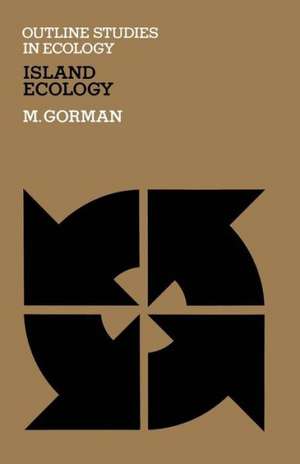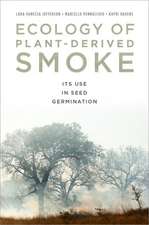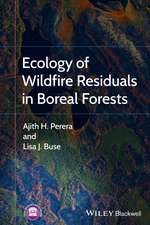Island Ecology: Outline Studies in Ecology
Autor M. Gormanen Limba Engleză Paperback – 18 oct 1979
Din seria Outline Studies in Ecology
- 15%
 Preț: 630.25 lei
Preț: 630.25 lei -
 Preț: 375.07 lei
Preț: 375.07 lei -
 Preț: 375.07 lei
Preț: 375.07 lei -
 Preț: 374.85 lei
Preț: 374.85 lei -
 Preț: 378.54 lei
Preț: 378.54 lei -
 Preț: 375.62 lei
Preț: 375.62 lei
Preț: 374.85 lei
Nou
Puncte Express: 562
Preț estimativ în valută:
71.73€ • 75.09$ • 59.35£
71.73€ • 75.09$ • 59.35£
Carte tipărită la comandă
Livrare economică 07-21 aprilie
Preluare comenzi: 021 569.72.76
Specificații
ISBN-13: 9780412155406
ISBN-10: 0412155400
Pagini: 73
Ilustrații: VI, 73 p. 12 illus.
Dimensiuni: 140 x 216 x 4 mm
Greutate: 0.1 kg
Ediția:1979
Editura: SPRINGER NETHERLANDS
Colecția Springer
Seria Outline Studies in Ecology
Locul publicării:Dordrecht, Netherlands
ISBN-10: 0412155400
Pagini: 73
Ilustrații: VI, 73 p. 12 illus.
Dimensiuni: 140 x 216 x 4 mm
Greutate: 0.1 kg
Ediția:1979
Editura: SPRINGER NETHERLANDS
Colecția Springer
Seria Outline Studies in Ecology
Locul publicării:Dordrecht, Netherlands
Public țintă
ResearchCuprins
1 Introduction.- 2 Reaching and colonizing islands.- 2.1 Getting there.- 2.2 Establishing a beach-head.- References.- 3 How many species?.- 3.1 Species number and habitat diversity.- 3.2 The effect of area alone.- 3.3 Equilibrium theory.- References.- 4 Islands as experiments in competition.- 4.1 Abundance shifts.- 4.2 Altitudinal shifts.- 4.3 Habitat shifts.- 4.4 Shifts in vertical foraging range.- 4.5 Dietary shifts.- 4.6 Assembly rules for island communities.- References.- 5 The very remote islands.- 5.1 The ancient conifers of New Caledonia.- 5.2 The Honeycreepers of Hawaii.- 5.3 Unresolved problems.- References.- 6 Some dangers of living on an island.- 6.1 The taxon cycle.- 6.2 What drives the cycle?.- References.- 7 Continental habitat islands.- 7.1 Islands of Páramo vegetation.- 7.2 Mountain mammals.- 7.3 Caves of limestone.- 7.4 Goldmines and Pikas.- References.- 8 Island ecology and nature reserves.- 8.1 How many species will a reserve support?.- 8.2 How long does it take to lose species?.- 8.3 Which species will be lost?.- 8.4 The design of reserves.- References.- Map-location of islands mentioned in text.












